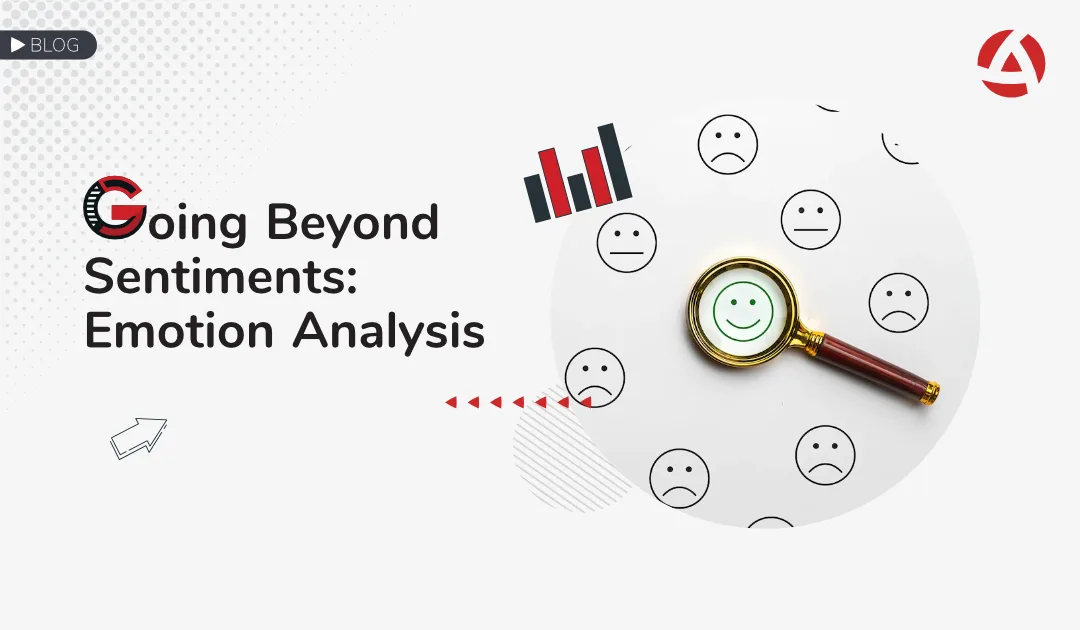Emotions do matter: Sentiment and Emotion Analysis
You have done everything you can to please your customers. In every aspect, your team of professionals provided the best possible service from the operational side; you are confident in your work. But what do your customers really think? Are you truly the best service provider on the market? Are they happy enough to repurchase your service or product? Happiness is an emotion, and emotions do matter. How can you understand your customers better? More importantly, how can you quantify these emotions? The terms “sentiment analysis” and “emotion analysis” are often used interchangeably. But are they truly the same?
Sentiment analysis vs emotion analysis
An emotion can be defined as a more specific sentimental mood. For example, “rage” and “unhappiness” are both negative sentiments. Yet, they symbolize two different emotions. Similarly, “faith” and “joy” are also two different emotions although each is generally understood to be positive. Therefore, a correct emotions analysis can give more valuable information than a simple sentiment classification. On the other hand, sentiment analysis can only reflect the target audience’s negative or positive feelings. Emotion analysis uses a much more complex system to understand consumer reactions. Sentiment statistics quantify simplified positive or negative indicators, while emotion analysis focuses on a wide range of human emotions and sensitivities to provide more detailed information. In an emotion analysis vs sentiment analysis challenge, the main goal of both methods is to find a way to better understand the consumer’s needs—but they differ in their approach to that information.
How emotion analysis provides better assessment than sentiment analysis
- It comprehends multidimensional emotions
It is widely accepted that human emotions are too complex to be characterized as positive or negative. To build a strategy for customer experience, you definitely need a holistic view of your customer’s reactions.
Sentiment analytics classify customer opinions as negative, positive or neutral. Emotion analysis, on the other hand, keeps you informed of customers’ motivations and emotional barriers. This helps you meet the customers’ needs with greater detail and deeper awareness.
- It provides accurate and meaningful insights
Sentiment analysis, unlike emotional analytics, offers more fundamental results rather than a comprehensive understanding of customer motivations and actions. You can easily use these insights for journey mapping activities to understand pain points as well as pleasure points. Then, it’s up to you to replace those pain points with “wow” moments.
- It helps to turn insight into action
By analyzing customer feedback beyond “positive” and “negative,” you gain a better understanding about the root causes of the major problems to be solved. Many companies today use customer analysis programs. They aim to listen to customers and analyze feedback accurately through surveys, social media data, and other communication channels. However, even though these operations are often executed correctly, many institutions can’t act fast enough. Using the data quickly is key to guaranteeing customer loyalty.
Take sentiment analysis to a new level with Alterna CX’s emotion analysis tool
Our emotion analysis modeling enables companies to receive actionable insights timelier and more accurately with a more cost-efficient method. Companies are now able to gain insight into whether their customers are happy or worried about the products and services they are consuming with today’s AI-based CX management approach. Customers generate this emotional data via surveys, text, complaints, social and digital conversations, and other interactions. Then, it is scrutinized by our AI-based advanced text analytics technology. Our development team was inspired by Dr. Robert Plutchik’s emotional wheel to create seven frequently felt emotions across experiences, regardless of the industry.
The emotion analysis model enables better customer experience analysis, predicting the effects of key human emotions on decisive business metrics such as NPS, retention, and revenue. By applying this tool, enterprises can identify the problems, opportunities, and issues that contribute the most to CX quality and customer loyalty, prioritize decisions accordingly, and initiate action by capturing and integrating emotional data into CX data.
Learn more about Alterna CX’s AI-driven CX management and emotion analysis tool
Conclusion
Fast customer feedback analysis also allows brands to learn what makes their customers happy or disappointed. This helps them provide custom-made products and services according to their customers’ needs. Sentiment and emotional analytics are often used interchangeably; however, these are two distinct methods that provide two different types of insights. In conclusion, emotion analysis splits the studied text into different groups of sentimental moods such as anger, fear, and happiness. Sentiment analysis, alternately, gives data in two categories: positive and negative. Emotion analysis takes this approach to the next level with a detailed study compared to sentiment analysis. This method also increases the complexity and difficulty of the evaluation. Nevertheless, a greater variety and depth of insights can potentially be obtained.
In the end, it is possible to enhance customer experience by mining customer emotions. This consideration can drive a new wave of profitability for your company. Formulating and embracing an emotional connection strategy, however, entails deep customer insights and expert analytical capabilities. When done properly, the huge payoff can be a source of real competitive advantage and growth.
Written by Poyraz Ozkan




